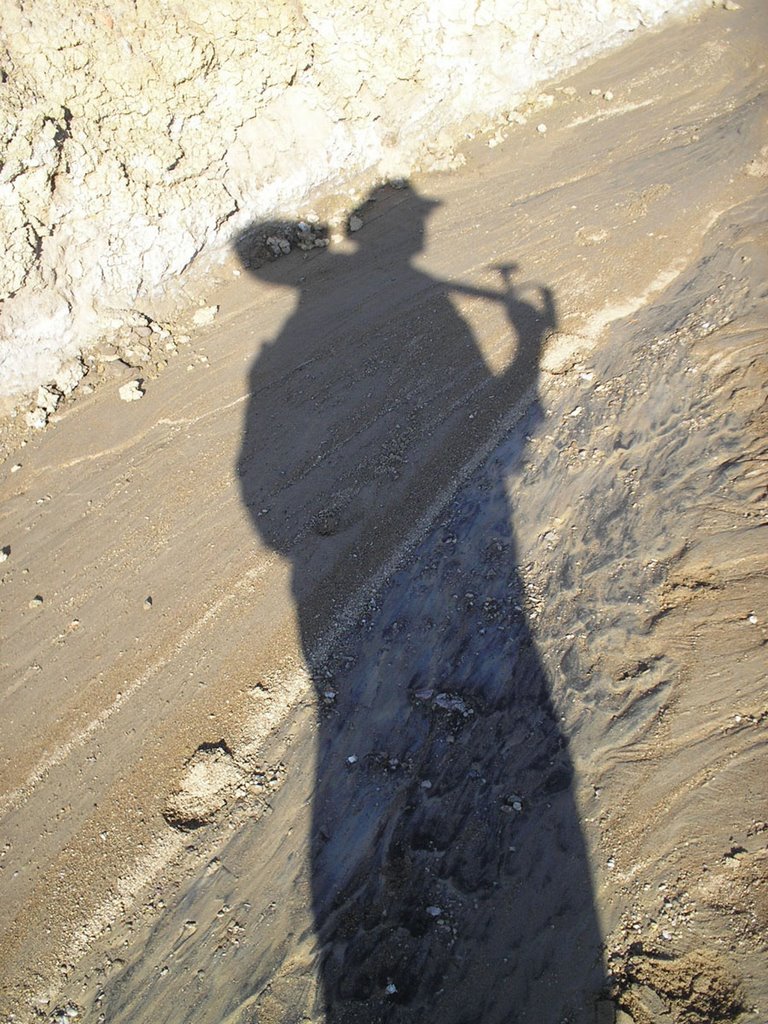Sauropod explosion

I don't know if you've been paying attention, but new sauropods have just been pouring out of the ground lately. Actually, that's been true for a while, but getting the beasts prepped and written up takes just about forever--in some cases, literally decades. So it's even more remarkable that descriptions of new sauropods have been pouring out of journals and other scientific publications lately. Just trying to keep up with all the new coolness is getting to be a challenge. Accordingly, Mike and Darren and I started keeping a new sauropod list. Here are the preliminary results for the last three years. As far as I can tell, 2005 was the first year ever in which the number of new valid sauropod genera hit double digits. The tally for 2006 currently stands at 13. It may well go higher; I often don't find out about some of the more obscure ones until months after they are described. If you know of any that I've missed, please let me know and I'll add them.
Just for fun, I put the age and country of each new 'pod, so you can see where and when the hotspots are. I left out Limaysaurus because that is a new name for an already known beast; the things left on the list are truly new.
2004
Borealosaurus wimani, Late Cretaceous, China
Bonitasaura salgadoi, Late Cretaceous, Argentina
Suuwassea emiliae, Late Jurassic, United States
Tazoudasaurus naimi, Early Jurassic, Morocco
2005
Archaeodontosaurus descouensi, Middle Jurassic, Madagascar
Baurutitan britoi, Late Cretaceous, Brazil
Brachytrachelopan mesai, Late Jurassic, Argentina
Cathartesaura anaerobica, Late Cretaceous, Argentina
Chebsaurus algeriensis, Middle Jurassic, Algeria
Daanosaurus zhangi, Jurassic, China
Dashanpusaurus dongi, Middle Jurassic, China
Galvesaurus herreroi, Early Cretaceous, Spain
Karongasaurus gittelmani, Early Cretaceous, Malawi
Puertasaurus reuili, Late Cretaceous, Argentina
2006
Adamantisaurus mezzalirai, Late Cretaceous, Brazil
Erketu ellisoni, Early Cretaceous, Mongolia
Europasaurus holgeri, Late Jurassic, Germany
Fusuisaurus zhaoi, Early Cretaceous, China
Huanghetitan liujiaxiaensis, Early Cretaceous, China
Jiutaisaurus xidiensis, Early Cretaceous, China
Ligabuesaurus leanzai, Early Cretaceous, Argentina
Maxakalisaurus topai, Late Cretaceous, Brazil
Sonidosaurus saihangaobiensis, Late Cretaceous, China
Trigonosaurus pricei, Late Cretaceous, Brazil
Turiasaurus riodevensis, Late Jurassic or Early Cretaceous, Spain
Yuanmousaurus jiangyiensis, Jurassic, China
Zapalasaurus bonapartei, Early Cretaceous, Argentina
Here's the breakdown for the last three years by continent.
South America - 10 of 27 or 37%
Asia - 9 of 27 or 33%
Africa - 4 of 27 or 15%
Europe - 3 of 27 or 11%
North America - 1 of 27 or 4%
Couple of things worth mentioning here. North America is not booming the way China, Argentina, and Brazil are, but new sauropods are still be described from North America all the time. In the past decade we've had Eobrontosaurus (after talking to Ray Wilhite I am not convinced that this is just Camarasaurus, as Upchurch would have it--time to drive out and see the material for myself!), Sonorasaurus, Cedarosaurus, Sauroposeidon, Venenosaurus, and Suuwassea (did I miss anybody?). Many more are waiting in the wings:
- the Jones Ranch critter, which should be published any day now;
- the camarasaur and titanosaur from Dalton Wells;
- the CEU brachiosaur, which is neither Brachiosaurus nor Sauroposeidon and is awfully damned big, with a 1.4 meter cervical vertebra reported in an SVP abstract;
- the Dinosaur National Monument brachiosaur, which is also new and valid;
- the KU brachiosaur, which I hear is to be described as a new taxon;
- a new sauropod from the Morrison Formation, which was the subject of a recent SVP presentation;
- at least one new sauropod from the Cloverly and at least one more from the Morrison, about which I can say no more for the time being.
There are probably loads more than I don't know about or have forgotten. The point is, North America is not out of sauropods yet. If anything, we're going through a boom--sauropods haven't been named at this rate from this continent since the 1800s.
Still, it will probably be the better part of another decade before all those things listed above make it into print, and a decade's worth of new North American 'pods might equal the output of a single year from China or Argentina if they keep on producing like they have the last two years.
The other thing worth mentioning is that all these new critters really are contributing to our knowledge of sauropod diversity. The smallest known eusauropods (i.e., excluding reclassified prosauropods like Anchisaurus), Brachytrachelopan and Europasaurus, were just described in the past two years. Although none of them can claim the title of THE BIGGEST, some really whacking big animals--Puertasaurus, Turiasaurus, Paralititan, Sauroposeidon--have been described in the last decade, and bigger ones are waiting to be described. Erketu represents a previously unknown lineage of freakishly long-necked sauropods
and Brachytrachelopan has the shortest neck, proportionally and absolutely, of any eusauropod. These new discoveries are not just filling in the gaps in a mostly-painted picture--they are stretching our ideas about what sauropods are.
And that's pretty cool.
Labels: Animals, Dinosaurs, Not Quite Science

2 Comments:
It's a nomen nudum at present, but the sauropod Yunxiansaurus was figured as a skeletal mount in a book of Chinese dinosaur eggs in 2005.... That aside, you've done a terrific job of keeping up on the "obscure" taxa!
Thanks! I'm trying to make a list of all known sauropoda and coming across an organized list of current discoveries has been a challenge!
Post a Comment
<< Home